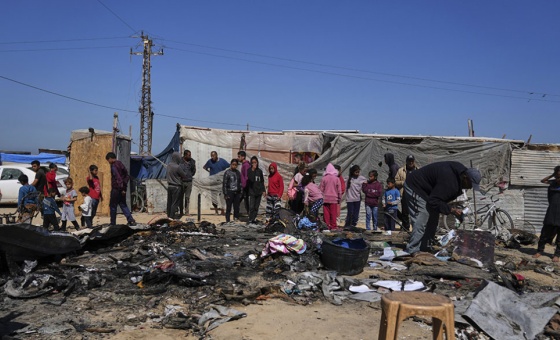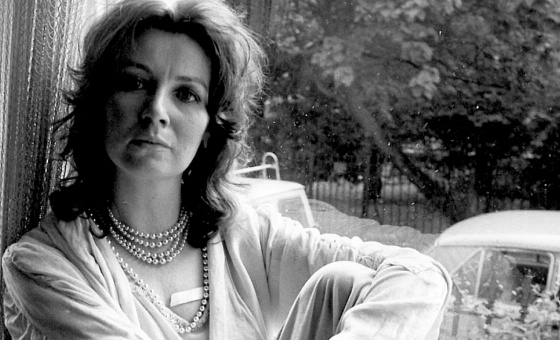This is the last article you can read this month
You can read more article this month
You can read more articles this month
Sorry your limit is up for this month
Reset on:
Please help support the Morning Star by subscribing here
LET’S face it: the best stadium in history, home to the best team in history, can only mean one thing: Manchester United will soon be unveiling a new stadium, one that will seat an astonishing 100,000 fans, all packed into the iconic Old Trafford on matchday.
This new Theatre, nay, Coliseum of Dreams will undoubtedly be a magnet for more trophies, more glory, and more celebrations as Manchester United achieve further greatness in the coming decades. The cheers of the fans will echo louder than ever before, but what will this new era really mean for the supporters?
What will the stadium be called? We know that naming rights are worth millions, I doubt it will be Old, or New, Trafford and another piece of our heritage is gone. We were told that the three masts represent the three prongs of the red devils trident, but we have heard no mention of the Munich clock or the United, or Holy, Trinity Statue.
Before and after each match, the stadium will be a hub of activity. Fans can expect to indulge in a variety of food and drink, with offerings from some of the most well-known food chains. But let’s be honest, this isn’t going to bring new business to the area.
Instead, it will likely result in inflated prices. The price of a bag of chips, served at Lou Macari’s chip shop at a reasonable price, will likely rise to almost a tenner, an example of how even the simplest pleasures is now subject to the pressures of profit-driven ambitions. And all those extra guests will be fed as part of a hospitality package that doesn’t include Lou Macari’s chippy.
While the club may have grand plans to build a stadium that will house 100,000 fans, it comes at a significant cost. It is claimed the development of the surrounding area may well lead to the creation of over 70,000 houses, but only if it is funded by the government.
Meanwhile, the rise of buy-to-let firms threatens to engulf Britain’s housing market, with the ever-growing number of landlords becoming the dominant business sector in the country. Data from Companies House already shows that the number of buy-to-let firms registered has overtaken fast-food chains, which is an alarming sign of how property has become more of a business opportunity than a home for families.
And how, and by whom, is this to be financed? Apparently not by the current owners who seek to raise investment and rely heavily on our tax to regenerate the surrounding area. We should keep an eye on the ownership model especially if a leaseback scheme, where initial investors build the stadium, sell it to recoup their investment and United leaseback, is used.
As for the promised 72,000 jobs that this project is supposed to create, many supporters and residents are sceptical. Will these jobs really result in long-term employment opportunities, or are they just another way to mask the growing trend of precarious, zero-hours contracts that have become a staple of modern employment?
While it’s easy to boast about job creation, it’s worth questioning whether those jobs will offer a living wage or if the pay will only barely meet the needs of workers who are left to rely on a diminishing benefit system to get by, and be vilified while doing so.
The promise of thousands of extra seats in the new stadium should make the hopes of aspiring season ticket holders a reality. Or will it? The truth is, even with the expansion, the demand for tickets will likely remain as high as ever. Fans who dreamed of finally securing a coveted season ticket might find that they are no closer to their goal.
In the past, going to Old Trafford was a more modest affair—20 years ago, I could take my son to the stadium, park for free in Salford, and enjoy a few drinks. My son would pick up a bag of sweets, and we’d rarely spend anything inside the stadium except for his new kit each year. The experience felt personal, genuine, and affordable.
Now, however, the landscape is different. It’s no longer about the match or the love of the game; it’s about the business model. A visit to Old Trafford today is likely to involve sitting next to a family who have spent hundreds of pounds on tickets, merchandise, and food. A simple trip to the stadium has evolved into an expensive outing, far from the modest days when a few quid could buy you a pie and a shared experience with fellow fans.
In the end, the expansion of Old Trafford, the 100,000 seat stadium, the job promises, and the shiny new food courts are all part of a larger trend — one where business interests and corporate growth appear to be taking precedence over the fans who have been with the club for years, where new fans capture and post the selfie of themselves then move on to the next experience.
While the new stadium will undoubtedly bring with it new memories, trophies, and glory for Manchester United, the question remains: at what cost? And during all this change, it’s worth asking— will the heart and soul of the club still belong to the people who matter most: the fans?
Or will they find themselves sidelined in a future where the business of football reigns supreme?







